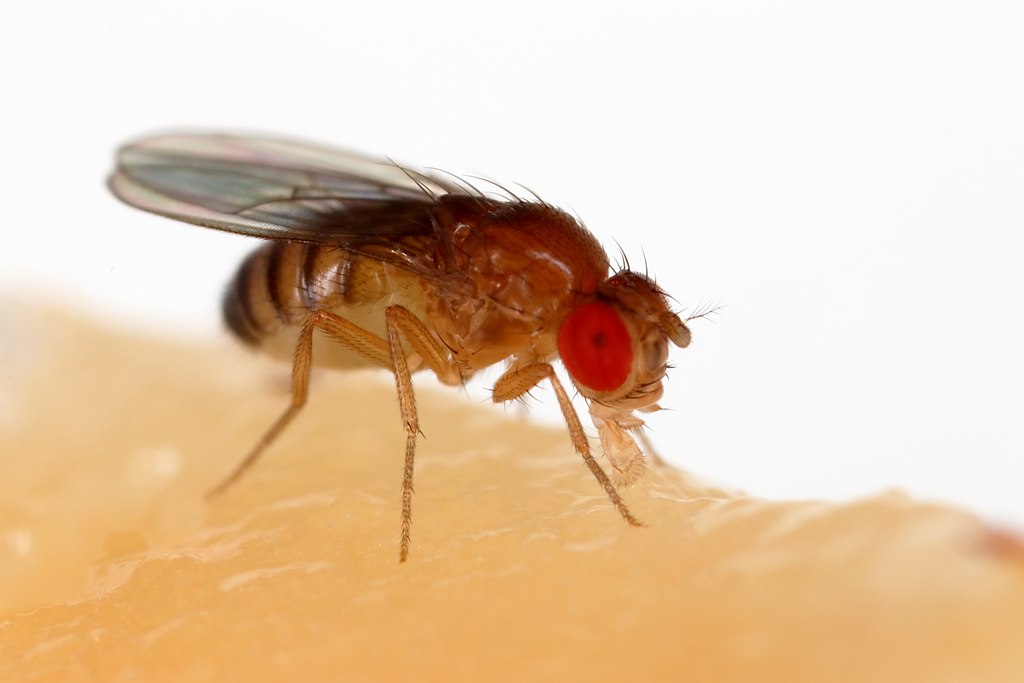New insect species made via genetic engineering
The discovery of organisms that are new to science has historically required years of field work, but species could become something we create instead of find
Lauren Leffer • December 18, 2020

The common fruit fly (Drosophila melanogaster) is one of the most commonly used species in genetics research and engineering. [Sanjay Acharya | CC BY 4.0]
A biotech fast-forward button for evolution is on the horizon. Researchers say they have used a novel genetic engineering method to create several new species of fruit fly in the lab for the first time — an achievement which might help put a future without malaria and other insect-borne diseases within reach.
The approach, called synthetic speciation, could prove useful in creating safer pest-control technologies, says Maciej Maselko, a postdoctoral fellow studying synthetic biology at Macquarie University. In one far-off scenario, according to Maselko, synthetic speciation might even be applied to generate designer organisms that could pollinate plants or even detect landmines. Maselko and his team published their findings September 8 in Nature Communications.
“Speciation has occurred billions of times on the planet, but hasn’t been engineerable [before],” says Michael Smanski, a molecular biologist at the University of Minnesota and member of the research team. Maselko, Smanski and their colleagues have previously used a similar method to engineer “species like” differences in yeast in 2018, but their more recent results are the first time the concept has been proven possible in a multicellular animal. This method could produce untold numbers of new animal varieties within months rather than millennia, Smanski says.
To make the new fruit fly species, the researchers relied on a genetic cut-and-paste tool called CRISPR-Cas9 to mutate the flies’ DNA. Species are generally considered distinct when they can’t interbreed, or create offspring together. When the mutated flies mated with wild, unaltered flies, the offspring didn’t survive, demonstrating that the two types of flies were genetically incompatible. However, the mutated flies were otherwise healthy and produced surviving offspring when paired with another fly sharing the same mutation, showing that the mutated flies could reproduce — but only with each other.
The team tested their method by creating 12 variations of mutated flies, housing them in test tubes with wild flies for five days and then counting the number of surviving offspring at various life stages. In nine of those variations, none of the offspring between mutated and wild flies survived to adulthood. This key finding could prevent unwanted, longer-term outcomes of genetic engineering experiments outside the lab, such as the elimination of wild species that interbreed with mutated ones. The researchers also found that each of the 12 fly strains carrying a unique set of mutations often couldn’t produce surviving offspring with flies of a different strain, yielding multiple genetically isolated lineages.
The new approach may solve a known problem — one that could easily arise when implementing gene drives — where engineered packets of genes that manipulate the outcomes of reproduction quickly spread mutations through a population.
Researchers are exploring gene drives as a way to manage malarial mosquitoes and other invasive or disease-carrying pests. But gene drives could lead to total genetic replacement if a small number of organisms carrying synthetic mutations were to escape from a lab and wipe out a wild, unmutated population — making studying and testing gene drives risky. Synthetic speciation eliminates the possibility of interbreeding, offering a more controlled and ecologically safer way forward for genetic engineering of wildlife, says Maselko.
The next challenge for the field will be to extend the approach to species such as mosquitoes, invasive carp or crop-eating beetles. But it will be more difficult to edit these species’ DNA, as their genomes are less studied than the genomes of fruit flies. “I’m hopeful that it’s possible, but it’s going to be challenging,” said biologist Omar Akbari at the University of California, San Diego, who heads up a lab that also works on synthetic speciation. “It will take some time and some engineering.”